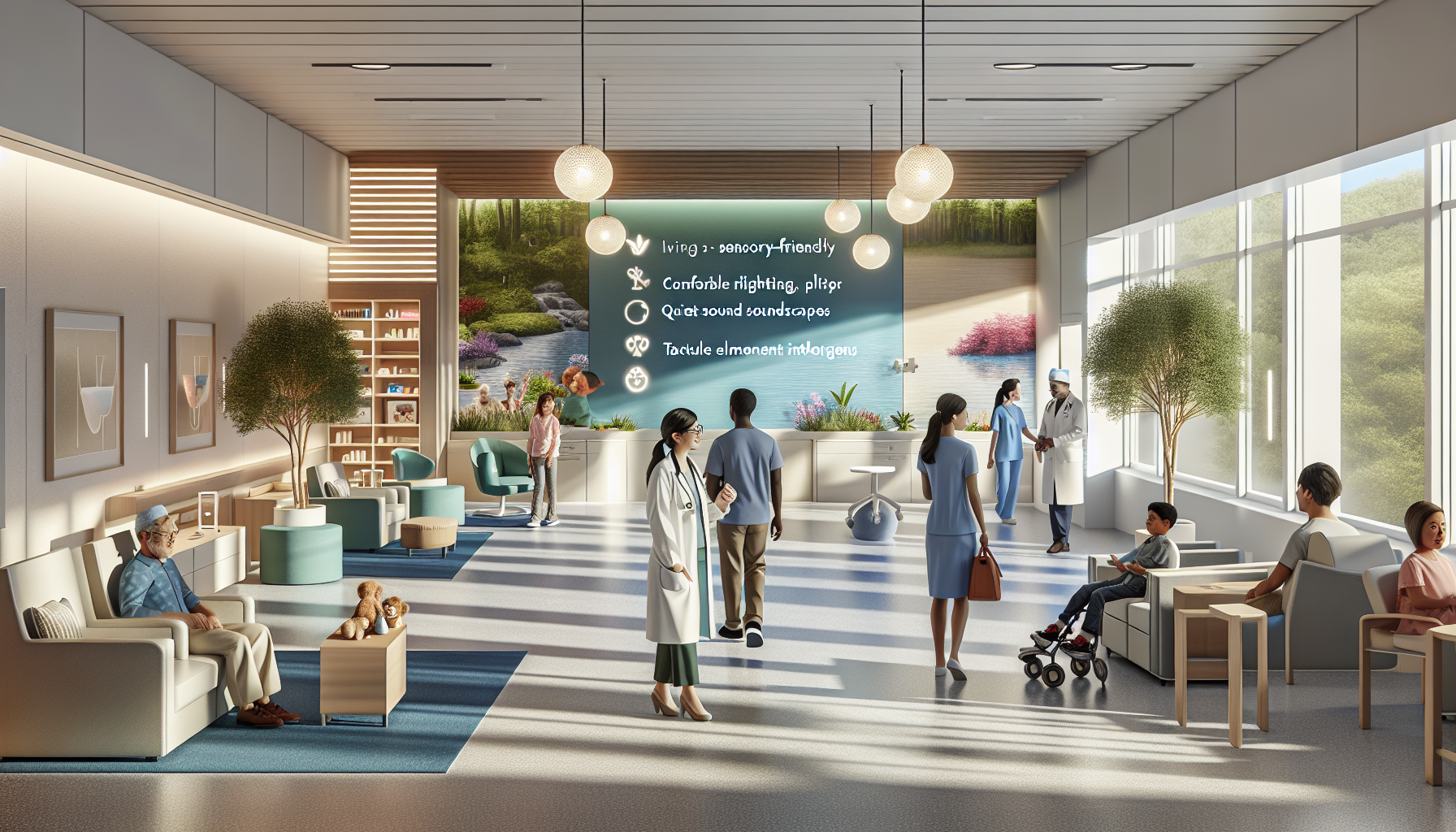Creating sensory-friendly spaces in healthcare settings is an essential step in improving the overall patient experience, particularly for individuals with sensory processing disorders or heightened sensitivities. Such environments not only cater to the needs of those with specific sensory preferences but also contribute to a more calming and supportive atmosphere for all patients, families, and healthcare providers.
Understanding Sensory Processing
Sensory processing refers to the way the nervous system receives messages from the senses and turns them into appropriate motor and behavioral responses. For some individuals, sensory processing does not function typically, leading to challenges in handling the sensory input from their environment, which can be overwhelming or uncomfortable. This is often seen in conditions such as Autism Spectrum Disorder (ASD), Attention Deficit Hyperactivity Disorder (ADHD), and sensory processing disorder (SPD).
To understand the importance of sensory-friendly spaces, it’s vital to recognize that sensory experiences are deeply linked to Sensory Health, which plays a crucial role in how individuals interact with their surroundings.
Designing Sensory Friendly Spaces
The design of a healthcare environment can significantly affect patients’ sensory experience. Here are comprehensive strategies to create a sensory-friendly healthcare space:
Lighting
Harsh lighting can be a source of discomfort for many individuals. Opt for natural light where possible and consider using adjustable lighting systems that can be dimmed or have their color temperature changed. This allows for a customized environment that can be adapted to the patient’s needs.
Sound
Noise is a common stressor in healthcare settings. Use sound-absorbing materials like acoustic panels or ceiling tiles to reduce echoes and background noise. Introduce white noise machines or sound masking systems to help mask disruptive sounds and create a more serene environment.
Color and Visual Complexity
Colors can have a profound impact on mood and behavior. Soft, muted colors are generally calming, while bright colors might be stimulating or even agitating for some. Simplify visual complexity by minimizing patterns and clutter, which can be distracting or distressing to individuals with sensory sensitivities.
Furniture and Layout
Furnishings should be comfortable and offer a variety of seating options to accommodate different preferences. The layout of the furniture should allow for personal space, avoiding overcrowding, and providing clear pathways for easy navigation.
Tactile Considerations
Incorporate a variety of textures that can be soothing and engaging without being overwhelming. This might include soft carpets, smooth wooden surfaces, and comfortable upholstery.
Smell
Healthcare settings often have a distinct smell that can be unpleasant or unsettling. Use non-toxic materials and cleaning products to minimize strong odors and consider introducing gentle, natural scents through plants or essential oil diffusers.
Technology and Equipment
The use of technology in healthcare settings is inevitable, but it’s important to be mindful of the sensory impact. For example, MRI machines and other diagnostic equipment can be intimidating and noisy. Some facilities have introduced MRIs with ambient lighting and sound systems that allow patients to watch movies or listen to music, which can help distract and calm them during the procedure.
Incorporating sensory-friendly design doesn’t have to be an overwhelming task. Facilities can gradually implement changes, often with minimal disruption and cost. Here are some of the benefits of creating these environments:
Benefits of Sensory Friendly Spaces
Improved Patient Experience
Patients who feel comfortable and calm in a healthcare setting are more likely to have a positive experience. This is particularly important for individuals with sensory sensitivities, but it benefits all patients.
Stress Reduction
A sensory-friendly environment can significantly reduce stress and anxiety, not just for patients but also for their families and healthcare staff. This can lead to better communication, cooperation, and overall satisfaction with the healthcare experience.
Enhanced Focus on Health
By minimizing sensory distractions, patients can focus better on their healthcare needs and interactions with providers. This can lead to more effective consultations and treatments.
Accessibility and Inclusivity
Making healthcare environments more sensory-friendly is also a step toward inclusivity, ensuring that individuals with various sensory processing needs can access and benefit from healthcare services.
Implementing Sensory Friendly Strategies
For those interested in learning more about specific strategies to improve sensory environments, the following resources provide additional insights:
- The Benefits of Sensory Walks for Cognitive Function offers ideas on how incorporating sensory walks in or around healthcare facilities can enhance cognitive function.
- Strategies for Developing Sensory Skills Through Occupational Therapy can be integrated into healthcare settings for patient benefit.
- Understanding the Relationship Between Sensory Processing and Anxiety is crucial for creating a supportive healthcare environment.
To support the points made, consider exploring these external resources:
- A comprehensive guide on designing healthcare spaces for children with ASD, which includes sensory-friendly design considerations, is available from the Autism Speaks Autism Treatment Network.
- For insights into the latest research on sensory processing and the environment, the STAR Institute for Sensory Processing Disorder offers valuable resources.
- The American Occupational Therapy Association provides guidelines and best practices for occupational therapists, which can be applied to creating sensory-friendly spaces.
Conclusion
Creating sensory-friendly spaces in healthcare settings is not just a niche concern but a fundamental aspect of patient-centered care. By considering the sensory needs of all patients, healthcare providers can craft environments that support healing, reduce stress, and enhance the overall healthcare experience. As awareness grows and more facilities adopt these practices, we move closer to a healthcare system that is truly inclusive and responsive to the diverse needs of those it serves.



